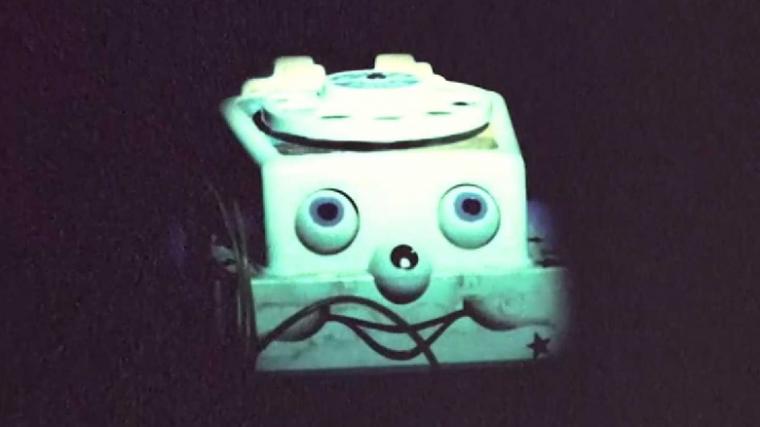
Skinamarink
SKINAMARINK
I had to look its title up before seeing the movie, immediately following the movie, and for two whole days after viewing the movie. Yet I think I'm finally ready to talk about Skinamarink – writer/director Kyle Edward Ball's insanely low-budget freakout that snuck into a bunch of theaters (including Iowa City's FilmScene on the Ped Mall) over the Friday-the-13th weekend, and whose debut was met with particular excitement among younger quarters of the Internet. One headline I scanned labeled Ball's film “this generation's Blair Witch Project,” and that's probably not inaccurate. I, personally, found the experience extremely tiresome and legit-scary for maybe 100 seconds of its 100-minute running length. Dammit, though, if I can't get this thing out of my head. Skinamarink hasn't been designed to work in ways that nearly every preceding horror flick has been designed to work. And despite being mostly bored and irritated, I gotta admit: The movie works, and is certainly worth more consideration than the weekend's more high-profile releases Plane and House Party. And I really enjoyed House Party.
Budgeted at a reported $15,000 – and no, that's not a typo excising three or four zeroes – Skinamarink doesn't boast much of a storyline, if you can call its “plot” a storyline at all. Rather, the movie is composed almost entirely of static, intensely grainy images shot in Ball's childhood home: overhead corners where the walls meet the ceiling; floor-level views of a television set that is forever showing black-and-white, public-domain cartoon shorts; closeups of Legos and carpeting and bowls of Frosted Mini-Wheats. Yet beginning with the silences that echo that repetitive loop you hear when an album has concluded but continues to spin, things in this house are decidedly Not Right. Windows and doors and a toilet promptly vanish from view. Characters appear and disappear without warning or explanation. Gravity and narrative logic and basic understanding are all defiled. Even our entryway into this Bizarro World is upended, because while Skinamarink's full cast totals all of four – Lucas Paul as four-year-old Kevin, Dali Rose Tetreault as six-year-old Kaylee, and Ross Paul and Jaime Hill as their parents – we're never allowed to see a single one of their faces. Everything in Ball's film is deliberately, uneasily abstract, and all we know for certain is that the movie looks and feels like a nightmare. In particular, and by design, a nightmare endured by a very young child.
Although I didn't enjoy my time at Skinamarink – and it's hardly a work that's meant to be “enjoyed” in any traditional sense – I was eager to read up on it afterward, and in doing so, was grateful to learn a couple things. One was that Hall's feature was based on his 2020 YouTube short Heck, which, having now seen the video, was a far more effective, successful attempt at what he's aiming to pull off with more than an additional hour at his disposal. The other significant piece of info gleaned was that, beyond the movie's funding being largely crowd-sourced, its inspiration was, too, with Hall recruiting the online brigade to recount their most troubling and disturbing childhood dreams that he would subsequently employ for a micro-budgeted fright flick. In fairness, Hall devised a thoroughly workable conceit for his group experiment – a tale in which Kevin and Kaylee wake to find their parents gone, their doors and windows gone, and, beyond the TV, an otherworldly demon as their only companion. And while I didn't participate in the online sharing myself, I'll readily state that Hall managed to recapture a number of my own childhood-nightmare scenarios with eerie authenticity.
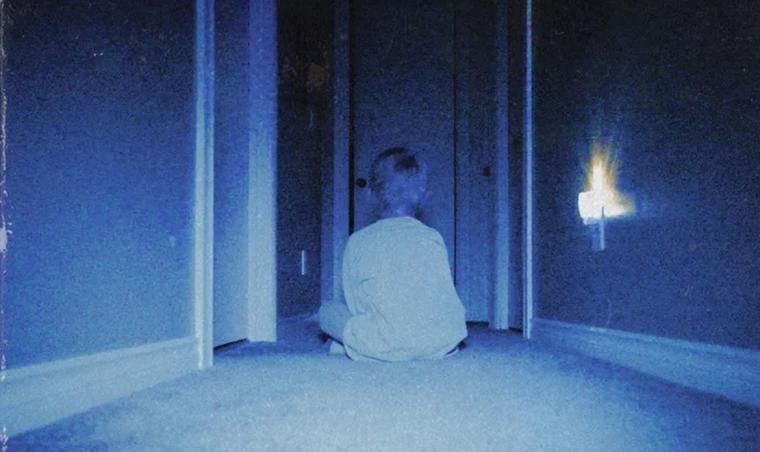
Everyone's dreams are undoubtedly different. But I've personally never been wholly on-board with dream sequences in movies – especially mainstream movies – for the simple fact that, unless I'm looking in a mirror in one of my dreams, I never actually see my own face. Everything I visualize is from a first-person perspective. So I hugely appreciated our inability to see full-on faces in Skinamarink (though we do get a side-view of Kevin at one point) as Hall's panic attack unfolded. And those Internet commenters clearly knew their stuff. Like our presumed protagonist Kevin, I, too, have had troubling visions of my world turned literally upside-down, and have been placed in front of doors I couldn't open and in hallways I couldn't travel, and have longed to see my parents smiling at me when, instead, I've only been allowed to view the backs of their heads. (The single finest scene in Hall's movie is of Kaylee encountering her hunched-over dad sitting on his bedside, and the man quietly offering his tyke the most terrifying of directives: “Look under the bed.”)
Best of all, Skinamarink gets at the insidious banality of nightmares in ways I've rarely witnessed on screen, as in David Lynch's 1977 masterpiece Eraserhead. Nightmares aren't nightmarish merely because they're terrifying. Generally speaking, it's also because the discontent they deliver is so slow – it feels like forever, and impossible, to get out of a bad dream – and so hyper-specific. I felt an immediate pang in my gut, here, when Kevin called 9-1-1 asking for help, and the kindly, supportive operator asked Kevin to be “a brave little guy” while they dispatched assistance, and the kid bravely replied that rescue might be impossible, as his house no longer had any doors. I've totally had dreams like that. But I was utterly demolished by the appearance of one of those omnipresent TV cartoons that Kevin and Kaylee watched: the 1935 short Balloon Land, which I'm pretty sure has been roaming around the nether-regions of my subconscious for close to half a century. I knew every single line and cadence of the Pincushion Man's sing-song when I was five, and maybe you did, too. (“I'm the old Pincushion Man! Terror of Balloony-Land!”) It scared me then; it horrifies me now.
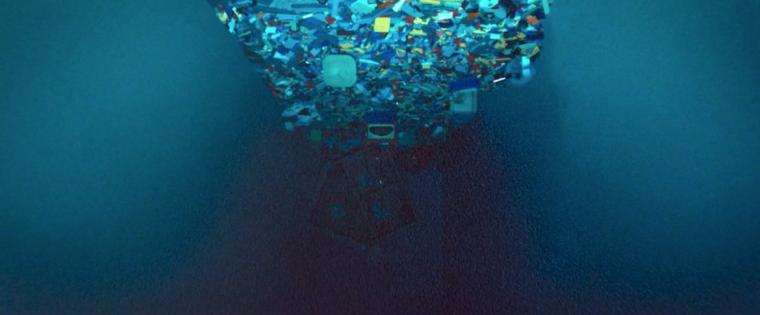
Hall's ideas are solid; his references precise; his promise evident. God how I wish the man's movie were more satisfying than it actually is. The sad truth, though, is that I yawned way more than I was engaged. After about 20 minutes of staring at immobile Blair Witch-y shots, searching in vain for any sort of terror lurking within the images, my initial avidity ultimately turned to disappointment, then fatigue, and then, finally, abject boredom, and I'm sorry – filmmakers are free to make audiences feel anything, but boredom should be at the absolute bottom of the list. And while I absolutely don't want to attack any $15,000-budgeted feature that miraculously managed to secure a high-profile theatrical release (and that has a passionate Internet fan base behind it), I have to add a few gripes in the form of questions. Why is some of the dialogue subtitled and some of it not, when all of the conversation is equally barely-intelligible? Why are subtitles – including the confounding “572 Days” inclusion – being employed at all? (Has anyone ever had subtitles appear in their dreams?) Why does Hall occasionally waylay his simmering mood piece, the tonal opposite of every current horror movie, with screechy sound effects whose only point is to deliver quick “Gotcha!” effects that aren't frightening, but merely startling, and for no thematic reason? And even keeping the 15 grand in mind, did the visual graininess have to be quite so grainy? There were numerous moments in Skinamarink in which I couldn't see anything at all, and the only reason I knew that the house's doors and windows disappeared was because the kids told us so.
Right after leaving Hall's film, I texted a friend saying that maybe I simply wasn't smart enough to understand what the writer/director was going for here. After a couple days' worth of contemplation, however, I don't think smarts have anything to do with my initially blasé reaction. Hall appeared to completely know what he wanted his movie to be. My guess, though, is that he simply didn't have the experience – and definitely didn't have the requisite budget – to completely pull it off. Yet that doesn't mean Hall shouldn't be allowed to try again, and I'll happily line up for whatever this obviously ingenious talent delivers next. In the end, I didn't care for Skinamarink. But I hope you see it at your earliest opportunity.
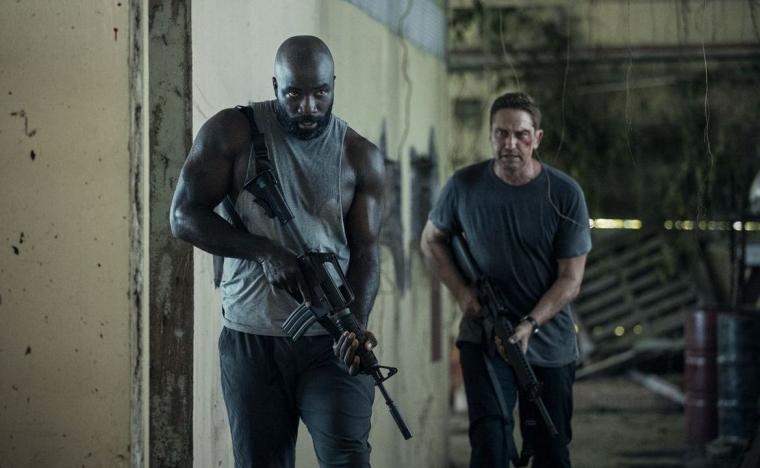
PLANE and HOUSE PARTY
Unless the releases are delayed Oscar bait, Midwestern movie fans in January are traditionally treated to shlock. As with most everything, however, there are good and bad kinds of crap movies. Last weekend's M3GAN was the good kind, and so, rather shockingly, is the House Party reboot. In terms of the bad kind, I'd direct you to the new action thriller Plane, but you really shouldn't be directed there at all.
In fairness, I've seen plenty of worse Gerard Butler vehicles than this one, which at least has the good sense to cast the native Scotsman as a Scotsman, and not another American whose unconvincing accent makes it sound as though he's speaking mid-belch. Director Jean-François Richet's ludicrously plotted yarn finds Butler playing pilot Brodie Torrance, whose commercial aircraft goes down en route to Tokyo, and who is consequently charged with saving a plane-full of passengers after they crash-land and run afoul of sadistic militants on a remote Philippine island. I should probably back up and mention that when I say “plane-full,” I really only mean about a dozen people, one of whom happens to be a handcuffed convicted murderer (Mike Colter) whose police escort is the first one to go. Naturally, this hulking brute with forearms bigger than most people's thighs turns out to have a hidden heart of gold, which was just one among dozens of testosterone-heavy-B-movie clichés that caused me to either roll my eyes or giggle inappropriately. (My favorite was one that rarely gets cited: The bloody cut above Brodie's left eyebrow – it's right there on the poster! – that gives Butler a manly-man countenance to accompany his eternal refusal to shave.) Yet what ultimately saves Plane from wretchedness is an utter lack of expectation. We know Richet's picture is January garbage to its teeth, and as such, it's easier to be impressed by the elements that miraculously don't suck.
As usual, at least for my money, Butler's presence isn't one of them. He isn't quite as obnoxious as I anticipated – being allowed to deliver lines in his natural brogue no doubt helped – and the star doesn't do anything outright offensive here. But Butler can always be counted on to offer the least surprising readings and reactions imaginable and to overact while doing so, and he quickly becomes a drag. Thankfully, though, Colter has enough charisma and subtle (and not-so-subtle) fierceness for the both of them, and Richet provides additional pleasures besides: a lengthy, brutal scene of hand-to-hand combat impressively shot in what looks like one take; the rescue sequence toward the finale that's genuinely funny for being so unexpectedly gory; Tony Goldwyn, all suave amusement as a Special Forces officer monitoring the aircraft's disappearance from afar. (Goldwyn slides through the film with the relaxed ease of someone grateful to perform the entirety of his sweaty-action-flick duties in an air-conditioned control room.) These commendable aspects absolutely help dull the pain, and make Plane's 105 minutes relatively easy to sit through. If only they helped make this thing in any way interesting. It should have been titled Plain.
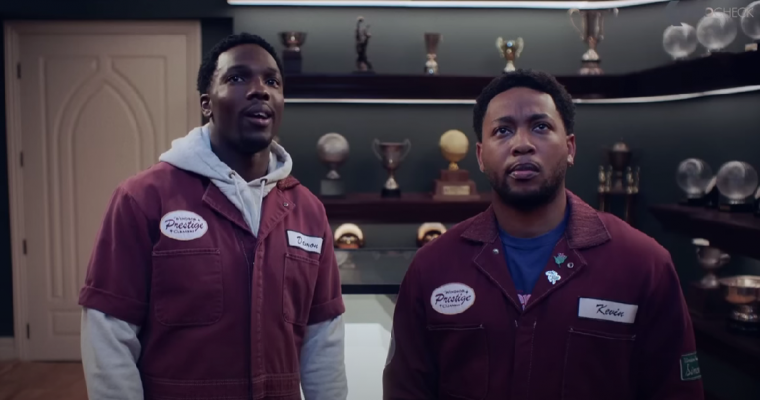
By contrast, director Calmatric's House Party has personality popping out all over the place, even if we needed a re-imagining of Reginald Hudlin's seminal hip-hop comedy even less than we needed a new Gerard Butler movie. (Well, maybe.) Upping the ages of 1990's hosts from high-schoolers to 20-somethings, this more profane outing involves house cleaners Kevin (Jacob Latimore) and Damon (Tosin Cole), who usurp the home of LeBron James for a massive money-making bash that will ensure their careers as professional promoters and pay for Kevin's daughter's education. Oddly, the film's most underwhelming aspect is James himself, who's just fine in hologram form, but who seems uncharacteristically self-conscious as a flesh-and-blood human. (James is one of the film's producers, and during his few minutes on-screen, there's actually more time spent genuflecting to the basketball great here than there was in the whole of Space Jam: A New Legacy.) Yet everything else is pretty terrific.
Latimore and Cole are no Kid 'n Play – a point cheekily underscored when the actors literally walk past the hip-hop duo late in the movie – yet they share a friendly and engaging rapport, with Cole doing a particularly adept impression of Eddie Murphy in the early '80s. (They also have a sweet, adorably complicated best-bros handshake that gets more hilarious with each repetition.) Jamal Olori's and Stephen Glover's script supplies a juicy minor role for DC Young Fly as a twitchy DJ forced to remain sober, as well as a number of truly inspired callbacks and fresh conceits. Among the former, the dance-battle reprise of 33-year-old steps was particularly welcome, and among the latter, I wouldn't trade the Eyes Wide Shut gathering of Illuminati for anything. (“It's time to determine this year's weather!”) And while such arrivals are usually things to dread, as they tend to crush a film's momentum, I have to say that the oodles of celebrity cameos found a bunch of recognizable talents spoofing themselves with majestic panache.
Snoop Dogg is basically employed as a visual gag, and Mýa, unfortunately, serves about as much purpose – and appears about as uncomfortable – as Christie Brinkley in National Lampoon's Vacation. Yet Lena Waithe is a riot when offering a stoned riff on her next project (“It's like Roots, but backwards”), and the Lakers' Anthony Davis delivers his one punchline perfectly, and among nearly a dozen other inspired guests, Scott “Kid Cudi” Mescudi is an absolute marvel. After knocking what you imagine will be a one-and-done cameo out of the park, Mescudi blessedly shows up again and again, and winds up delivering perhaps the finest, funniest WTF?! in-joke portrayal in a slapstick since Neil Patrick Harris back in the Harold & Kumar days. He helps make this agreeably slight, deeply unnecessary release a House Party well-worth crashing.








